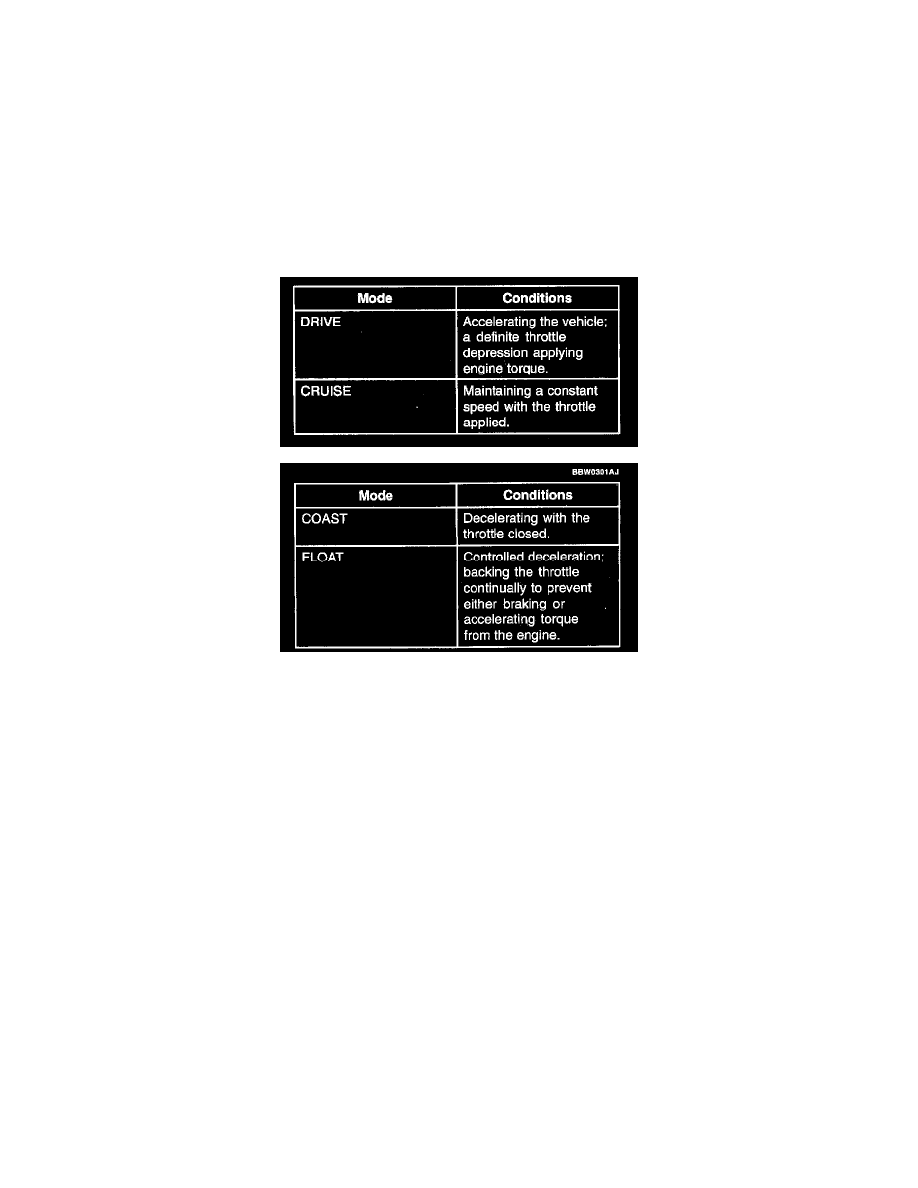B4000 V6-4.0L SOHC (2005)

Tires: Testing and Inspection
SYMPTOM TROUBLESHOOTING CHART - DRIVELINE / AXLE
Preliminary Diagnosis
^
Question the Customer
The preliminary diagnosis starts with the customer interview. The history of the concern must be investigated: When was it first noticed? Did it appear
suddenly or gradually? Did any abnormal occurrence coincide with or precede its appearance (such as pothole or curb impacts, minor collisions, etc.)?
Were any repair procedures performed or parts replaced? It is also necessary to know any special conditions affecting the appearance and degree of
the concern, such as road speed, type of road, drive mode, engine temperature, ambient temperature, etc.
A gradual appearance of the concern indicates a deterioration of a component, such as tires, halfshafts or front wheel bearings.
A sudden appearance of the concern could indicate a lost wheel balance weight or frozen constant velocity (CV) joint.
ROAD TEST - DRIVELINE / AXLE
A road test is mandatory for any customer concern of noise/vibration that is not verified by the on-hoist check of chassis components.
Operate the vehicle in all four modes and record those in which the noise occurs. Write down the kilometers-per-hour (miles-per-hour) range at which
both noise and vibration occur. Evaluate rear axle noise with the transmission in DIRECT DRIVE and not in OVERDRIVE. Transmission noise can
be mistaken for rear axle noise when in OVERDRIVE.
AXLE NOISE ACCEPTABILITY
Note:
^
A gear-driven unit will produce a certain amount of noise. Some noise is acceptable and audible at certain speeds or under various driving
conditions such as a newly paved blacktop road. Slight noise is not detrimental to the operation of the axle and is considered normal.
With the Traction-Lok differential axle, slight chaffer noise on slow turns after extended highway driving is considered acceptable and has no
detrimental effect on the locking axle function.
PROPELLER SHAFT INSPECTION AND VERIFICATION
Certain axle and driveline symptoms are also common to the engine, transmission, wheel bearings, tires, and other parts of the vehicle. For this reason,
be sure that the cause of the trouble is in the axle before adjusting, repairing, or replacing any of its parts.
Certain symptoms may be caused by limited slip differentials. Check the vehicle certification label and axle identification tag to determine the type of
differential.
AXLE - ANALYSIS OF LEAKAGE
Clean up the leaking area enough to identify the exact source. An axle leak can be caused by the following:
^
Axle lubricant is too high.
^
Worn or damaged axle shaft seals or differential seals.
^
Differential housing is cracked.
^
Flange yoke seal is worn or damaged.
^
Pinion flange is scored or damaged.
^
Axle cover is not sealed.
^
Vent is plugged.
